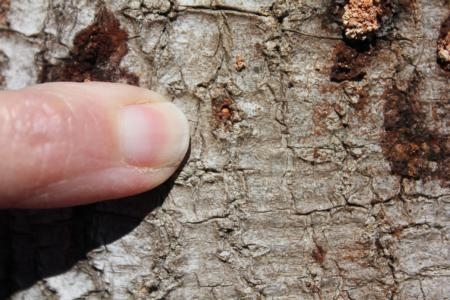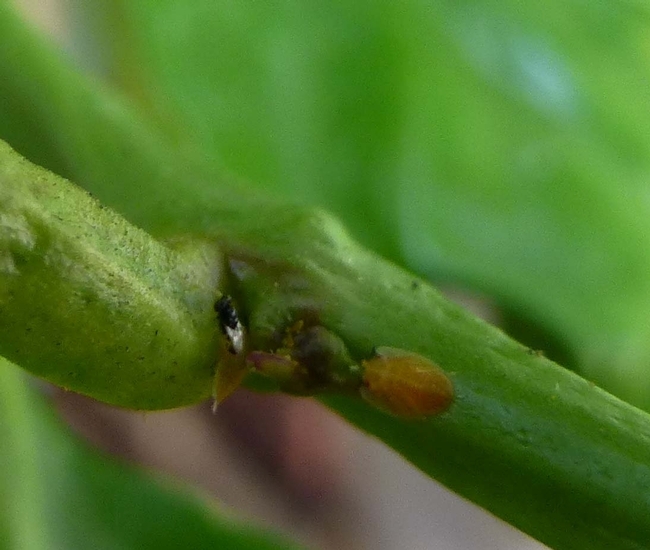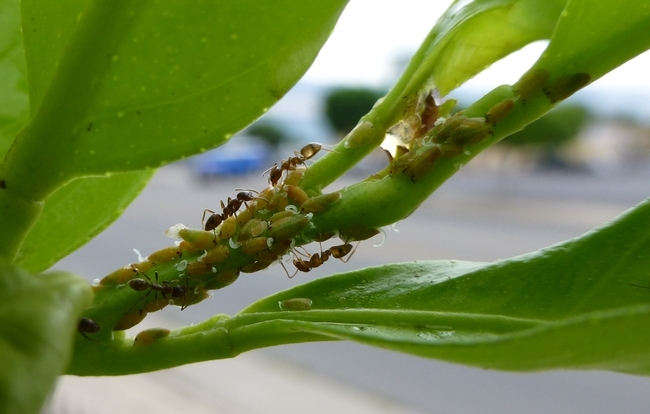Posts Tagged: biocontrol
Let's Hear It for Biocontrol, Integrated Pest Management
Let's hear it for biocontrol. You've seen lady beetles, aka ladybugs, preying on aphids. But have you seen an assassin bug attack a spotted...
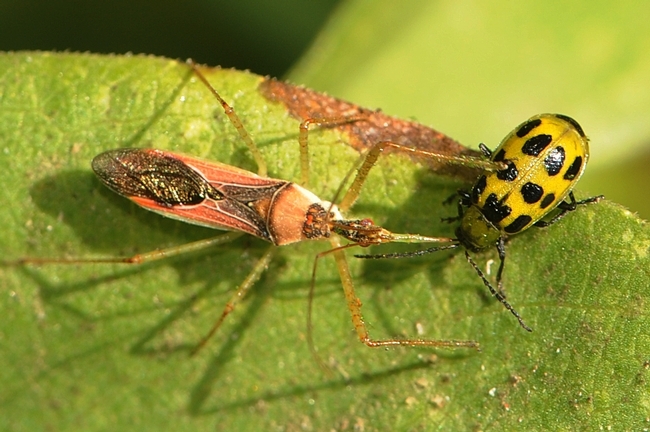
An assassin bug drills a pest, a spotted cucumber beetle. (Photo by Kathy Keatley Garvey)
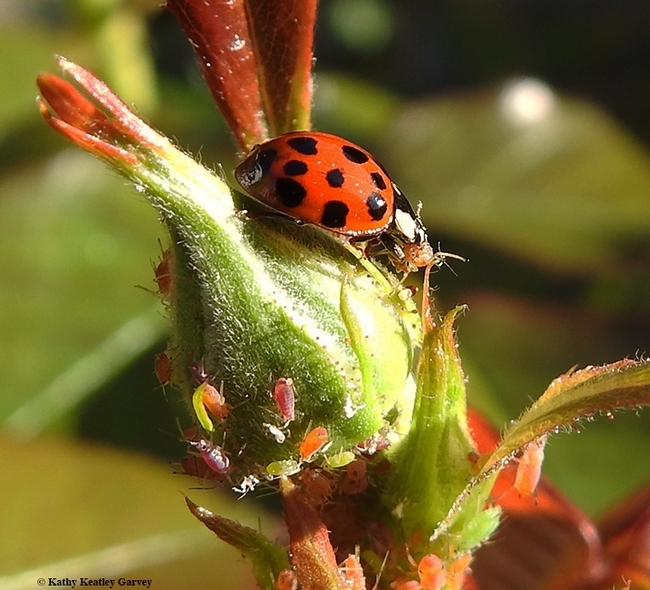
A lady beetle, aka ladybug, snares an aphid. (Photo by Kathy Keatley Garvey)
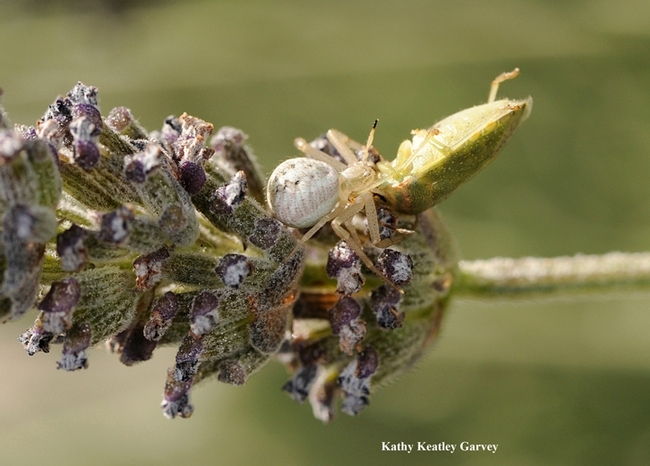
A crab spider munches on a stink bug. (Photo by Kathy Keatley Garvey)
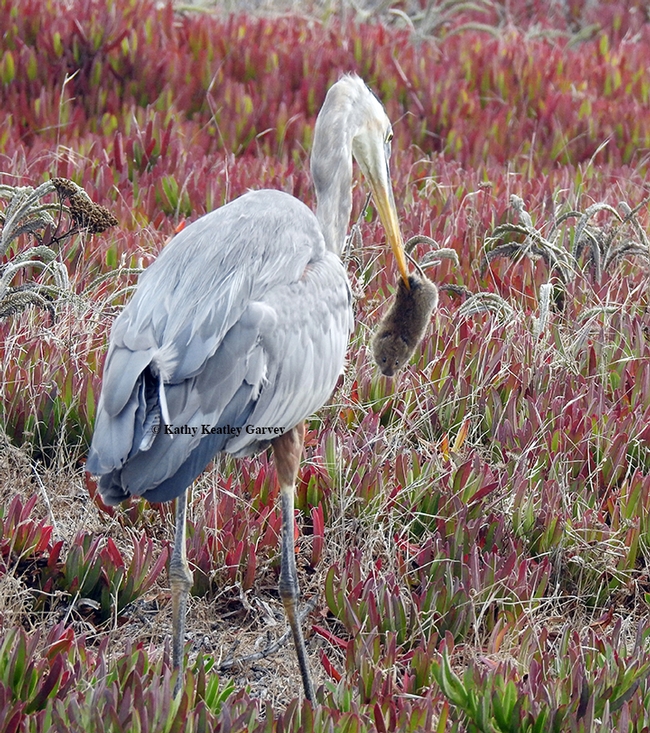
A great blue heron engages in a little pest management: it catches a rodent, a meadow vole, at Bodega Bay. (Photo by Kathy Keatley Garvey)
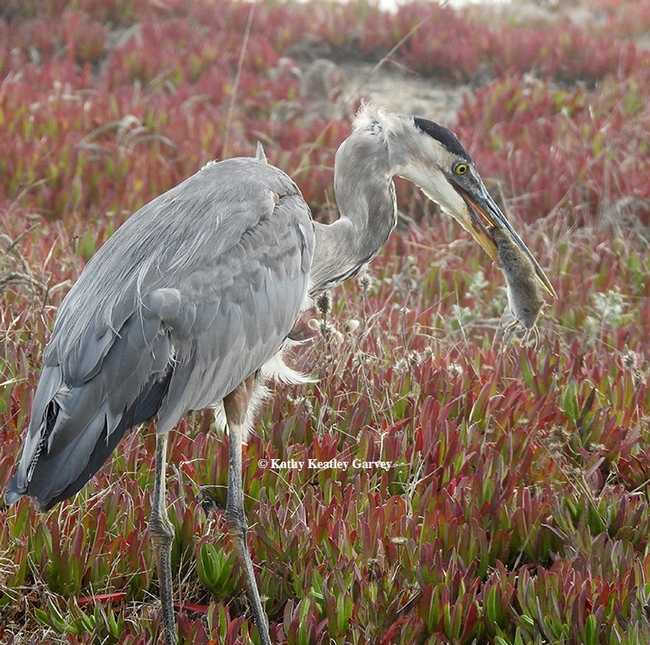
The great blue heron gets its prey, a meadow vole, in position before swallowing it whole. (Photo by Kathy Keatley Garvey)
Alfalfa YouTube Finalist
We are excited to announce that our Alfalfa IPM YouTube video titled, “Identification of parasitized alfalfa caterpillars and armyworms”,...
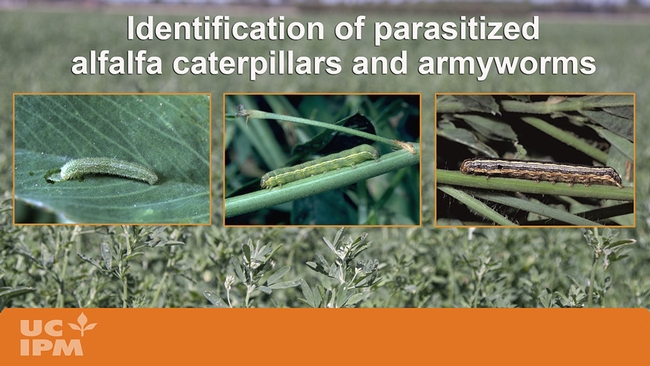
YouTube video showing how to identify parasitized caterpillars in alfalfa fields
Sesame seed-size insect is victimizing trees in Southern California
The polyphagous shot hole borer is taking up residence in California trees from San Diego to Santa Monica and as far east as Riverside County, drilling circular tunnels and spreading fungal spores that kill trees from the inside out, reported Amina Kahn in the Los Angeles Times Science Blog.
Akif Eskalen, UC Cooperative Extension plant pathology specialist at UC Riverside, wants to contain this invasive bug before it spreads throughout Southern California.
"If we can't control them," Eskalen said, "they are going to wipe out all our trees."
Box elders, sycamores, American sweetgum, maple and coast live oaks are susceptible to polyphagous shot hole borer attack. In urban and suburban areas, the dead and dying trees can pose fire and limb falling dangers. In the agricultural sector, avocado trees could face huge financial losses. In the fight against the pest, the California Avocado Commission has provided Eskalen $800,000 to broaden his investigation into this mysterious species of ambrosia beetle.
In March, Eskalen and his colleagues - UC Riverside entomologist Richard Stouthamer and Huntington Library curator of woody collections Tim Thibault - spent two weeks in Vietnam, where PSHB originates, searching forests and fields for natural enemies of the fungus spread by the pest. They collected a host of possible allies, whose DNA is now being analyzed in the lab.
"I am very hopeful that we are going to find some solutions to control this fungus," Eskalen said. "We have to."
Invasive meltdown
Ants can be a huge nuisance in and outside our homes, particularly if you have food lying around. But now, it turns out, they’re unwelcome, too, on citrus trees.
A year ago, UC Riverside entomologists released Tamarixia, a parasitoid wasp and natural enemy of the Asian citrus psyllid (ACP) imported from Pakistan, into a biocontrol grove in Riverside, Calif. Tamarixia can serve as an excellent biocontrol agent against ACP, a citrus pest first detected in 2008 in Southern California that is capable of spreading citrus greening disease, or Huanglongbing.
Tamarixia’s success starts with a female laying an egg on the underbelly of an ACP nymph. When the egg hatches, the parasitoid larva will scrape away the nymph’s belly, carving out a hole to push through to enter the nymph’s body. Feeding on the contents, the larva eventually excavates the entire nymph, leaving only a shell or husk of the nymph behind.
Female Tamarixia can kill psyllids also by “host-feeding.” They use their ovipositors as daggers to stab psyllid nymphs numerous times until the nymphs start to bleed. As bodily fluids ooze out of the nymph, Tamarixia sucks up this rich protein needed for developing more eggs.
An excellent way then to control ACP populations! Yes, but only until the ants come marching in. Argentine ants are threatening to disrupt the biocontrol of ACP by battling it out with Tamarixia on citrus branches. While not quite a Vader-Skywalker lightsaber duel on a precarious walkway, an “invasive meltdown” begins when the ants gang up to protect the nymphs.
“ACP nymphs produce a white, sugary waste product called honeydew, a good carbohydrate source for the ants,” explains Mark Hoddle, the director of the Center for Invasive Species Research at UC Riverside, whose research team has released Tamarixia into several Southern California citrus groves. “The ants, therefore, will protect the nymphs from Tamarixia. We have seen ants chase female Tamarixia off the psyllids, and even catch and eat them!”
“If you kill off the ants, Tamarixia can play the role of the biocontrol agent it was cast to do on citrus trees,” Hoddle says. “We’re seeing that the ants are impacting Tamarixia in two ways: they are preventing Tamarixia’s establishment in some areas; and, where Tamarixia is already established, the ants are not allowing these parasitoids to reach their full biocontrol potential.”
When Contemplating Biocontrol of Pests
What are the important considerations when contemplating the biological control of pests? That's one of the topics when the Northern California...

Lady beetle, aka ladybug, prowling for aphids on a blanket flower, Gaillardia. (Photo by Kathy Keatley Garvey)

Close-up of lady beetle, aka ladybug. (Photo by Kathy Keatley Garvey)


